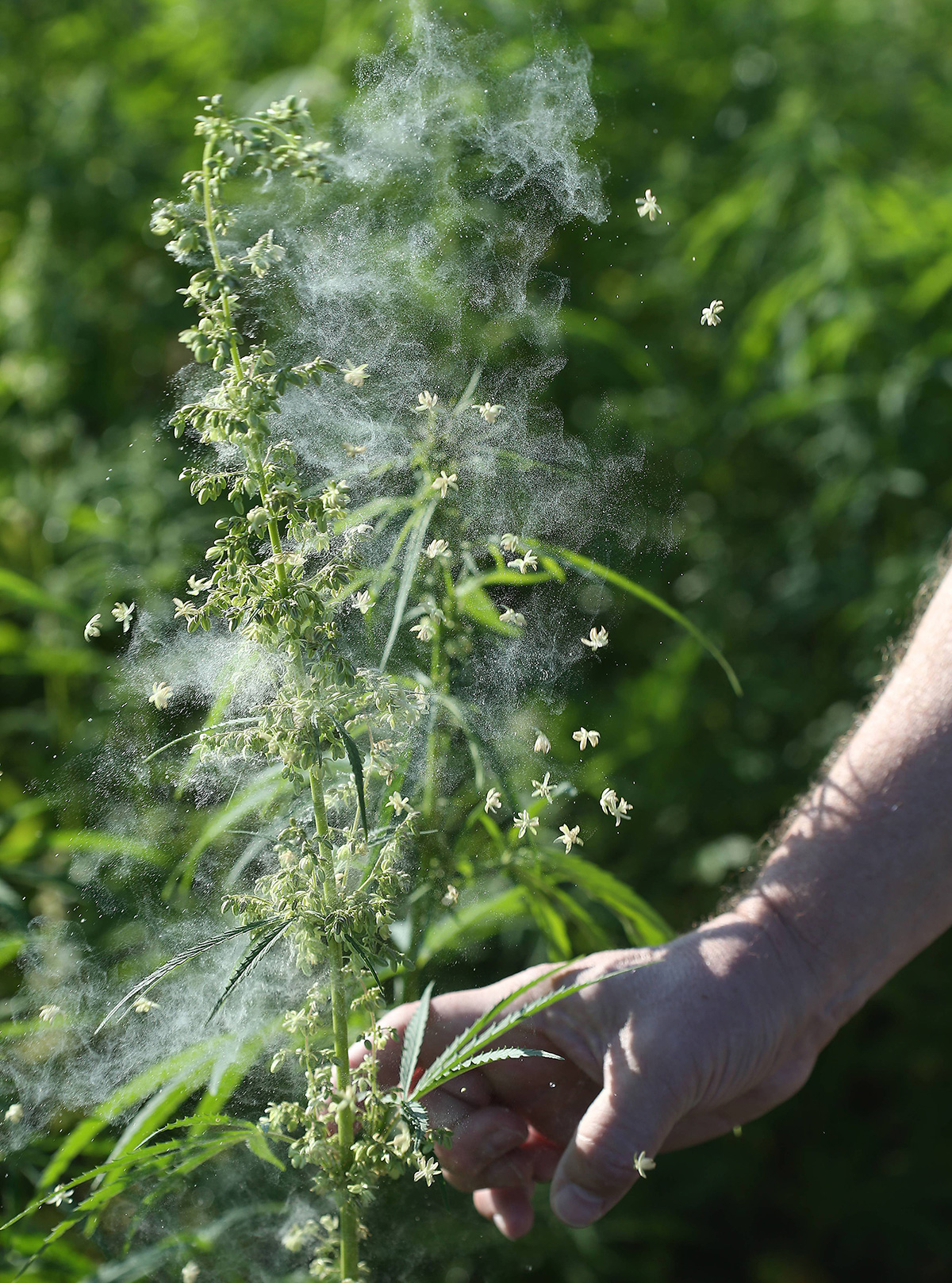Source: dopemagazine.com

In Pueblo County, Colorado, pollen drift is wreaking havoc on cannabis crops. Tom Dermody, Executive Director of the Industrial Hemp Research Foundation (IHRF), calls it a ticking time bomb with national implications. Pollen drift is the unintentional cross-pollination between different types of crops. With cannabis, that includes three variations:
- Industrial hemp grown for seed, oil and fiber. This crop is low in all cannabinoids and includes both male and female plants.
- Low-THC hemp grown for non-psychoactive cannabinoids, such as CBD. These are all-female grows.
- High-THC marijuana grown for its psychoactive and medicinal properties. These are also all-female grows.
When female cannabis plants are allowed to cross pollinate with seed and fiber orientated-cannabis, their cannabinoid potency plummets. This means CBD-producing hemp and THC-producing marijuana crops are particularly at risk. If they become pollinated, they’re either discounted as substandard or considered a total loss.
This is the problem in Pueblo, a mecca of outdoor, female-only cannabis grows. Nearby, five neighboring counties have robust outdoor industrial hemp cultivations. “This has resulted in a significant amount of pollen transfer-related crop loss,” says Dermody, “somewhere to the tune of 12 to 18 percent, depending on which part of the county you’re in.”
Pueblo County’s solution was to enact a four-mile buffer between hemp and marijuana grows. It didn’t work out as they’d hoped. “It sounds like a great fix,” says Dermody, “but pollen dust travels far greater distances than four miles. And the county cannot interfere with the production of industrial hemp outside the county line.”
Indeed, pollen dust can travel hundreds of miles. One famous case of pollen drift occurred in southern Spain in 1995. Scientists taking air samples detected large amounts of marijuana pollen, which had traveled 250 miles over the Strait of Gibraltar and 100 miles inland from Morocco. While the U.S. may not have warm sea winds to carry pollen for hundreds of miles, the example does show that pollen dust won’t stop at an imaginary line.
The buffer problem has now extended beyond Pueblo, which could spell crop loss in other states as well. Washington, for example, took Pueblo County’s four-mile buffer as gospel, writing it into the state’s recent hemp legislation, HB2064. As a result, Washington now has two problems on its hands. With so many recreational marijuana grows in the western part of the state, it’s nearly impossible to grow industrial hemp in that region. And as buffer zones may be ineffectual, pollen-drift-related crop loss could happen anyway.
“THIS HAS RESULTED IN A SIGNIFICANT AMOUNT OF POLLEN TRANSFER-RELATED CROP LOSS,” SAYS DERMODY, “SOMEWHERE TO THE TUNE OF 12 TO 18 PERCENT, DEPENDING ON WHICH PART OF THE COUNTY YOU’RE IN.”
We need science-backed research that can give us real data regarding buffer zones and pollen drift. And we need to find alternatives. This is where the IHRF comes in. They help institutions of higher learning get the financial and material support they need to conduct hemp-related research. They have several projects scheduled for 2018 to study how, when and where pollen drift occurs with cannabis, and how to prevent it.
They hope to have a solution by 2019. Dermody expects it will have less to do with buffers, and more to do with strategic timing and planting schedules, alternating between industrial hemp and all-female cannabis crops industry-wide.
“It’s more a question of developing a planting schedule,” Dermody explains, “where female grows would plant their clones into outdoor production [after] the highest rate of pollen transfer from the male producing plants.” This solution seems more bulletproof than buffer zones. It could allow large-scale outdoor hemp and marijuana grows to co-exist in areas like Pueblo County and Western Washington. This would be a boon for all facets of the cannabis industry.
“With agriculture in general,” says Dermody, “the United States has a tremendous opportunity to retrofit its commodity stocks to incorporate a greater amount of hemp in this country.” In 2014, there were only a few acres of industrial hemp being grown in the United States. Now, in 2017, we may well surpass 20 thousand acres. Dermody predicts that by 2020, we’ll surpass 100 thousand, rivalling the robust hemp industries of Canada and Southeast Asia.
This is all well and good, but it concerns Dermody. “That is both the gift and the curse of U.S. agriculture,” he says. “We tend to get ahead of ourselves without dealing with fundamental policy issues, and then we have to go back and fix it.”
Learn more about the Industrial Hemp Research Foundation’s work by visiting their website, theihrfoundation.com, or send a question to info@theihrfoundation.com
Only aspire to mention ones content can be as incredible. This clarity with your post is superb and that i may think you’re a guru for this issue. High-quality along with your concur permit me to to seize your current give to keep modified by using approaching blog post. Thanks a lot hundreds of along with you should go on the pleasurable get the job done.
ReplyDeletecannabis store